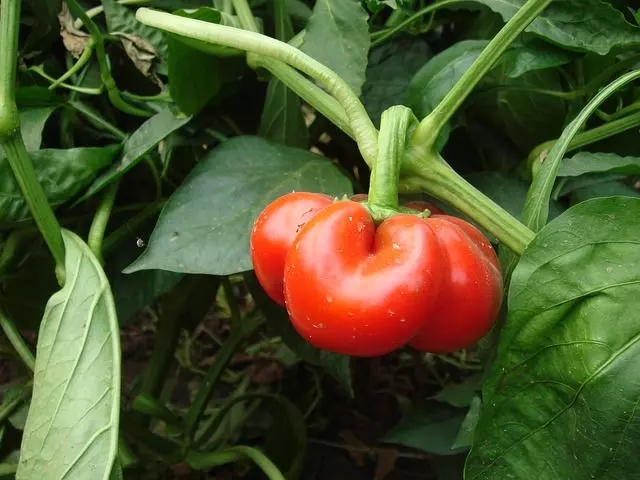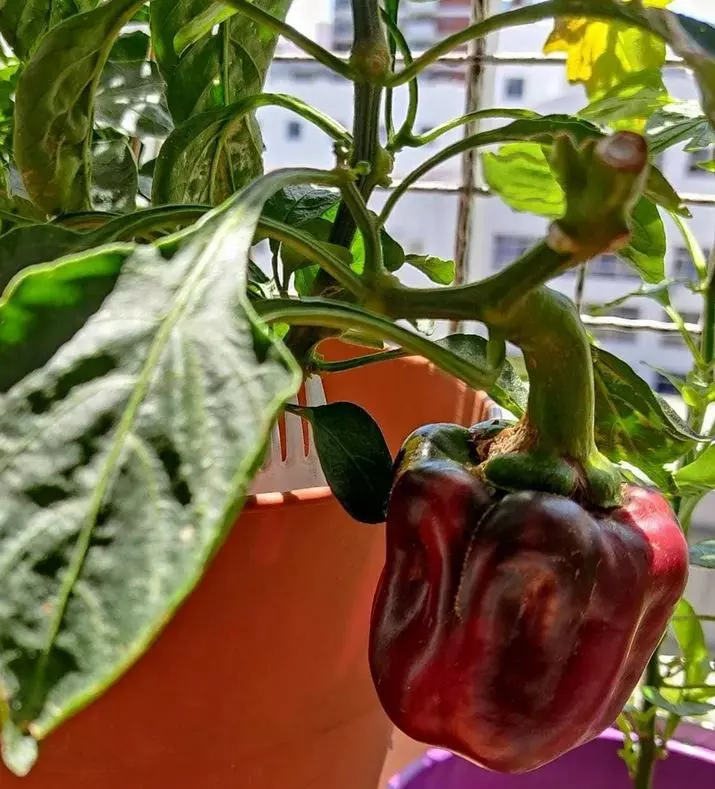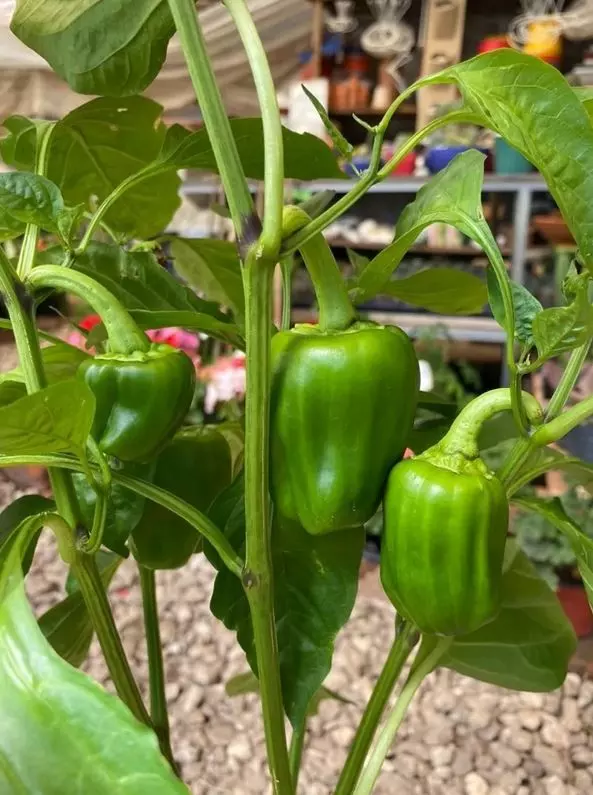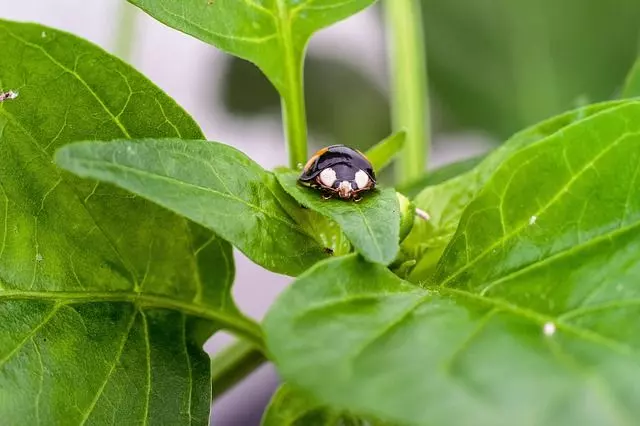Bell peppers are one of the most popular crops in the garden and their many varieties mean that there are peppers for all culinary tastes and therefore become essential in any self-respecting garden. Today we tell you how to grow bell peppers in the garden successfully.
Table of Contents
How to Grow Bell Peppers – Step by Step
Sowing bell peppers are sown 2 to 3 weeks before the last frost in protected seedbeds. Their development is somewhat slow, so we recommend not leaving it to the last minute so that they have enough time to produce a good harvest when summer arrives.
How to Grow Bell Peppers:
1- Prepare a tray or container with a certain depth, at least 6″ to 8″ (15 to 20 cm) deep.
2- Fill the container with the substrate. It is recommended here to use compost or manure and cover the container with plastic or transparent glass so that the fermentation creates a warm bed effect and keeps the temperature of the container above 68°F (20°C). If you want your bell pepper seeds to germinate, the temperature mustn’t drop below this point.
3- Place the seedbed in a sunny area, as this vegetable needs daily sun. You should start to see seedlings 8 to 20 days after sowing.
4- Two months after planting, your bell peppers should be about six inches tall. At this point, they are ready to be repotted to their final location.
Repotting: bell peppers are repotted into their final pot when minimum temperatures exceed 59°F (15ºC), about 2 months after sowing. The ideal size of the plant to be repotted is when it has about 6-8 leaves.
To plant bell peppers in pots, repot one plant per pot with a minimum of 4 Gallon (15 liters) of the substrate.
To plant bell peppers in the ground, place them in a planting frame of about 16″ (40 cm) between plants and about 31″ – 39″ (80-100 cm) between rows.
- One of our favorites! Rainbow Blend Mix of Sweet Bell Peppers is so much fun! These beautiful peppers will add fun color to salads and stir fry!

How to Care for Bell Peppers
Weather: bell peppers are very sensitive to cold and need temperatures above 50°F to 59°F (10-15ºC) to develop well, although their ideal temperature is around 68°F to 77°F (20-25ºC). They do not tolerate sudden changes in temperature between day and night. They do not tolerate sudden changes in temperature between day and night.
In colder areas, it is recommended to protect the bell pepper plants during the night with a thermal blanket, until the indicated minimum temperatures are exceeded so that the bell pepper plants do not stop growing or encounter large temperature fluctuations between day and night.
Although they love light and heat, in the summer months it is advisable to look for a partially shaded exposure, to prevent them from being sunny.
Soil and fertilizer: bell peppers prefer light, humus-rich soils for optimal growth. In pots, an earthworm humus-based substrate is ideal for their cultivation.
They need a soil rich in organic matter (manure, compost, worm castings) and an extra supply of guano or another organic source of potassium every 15 days after flowering, thus favoring the production of flowers and fruits and allowing more abundant harvests.
Watering: It is commonly said that bell peppers need to be thirsty, this means that frequent but somewhat spaced watering is necessary (every 3-4 days right after repotting and every week in summer), as they do not tolerate excessive humidity or continuous watering. Waterlogging could suffocate their roots.
Avoid wetting the leaves and the lower part of the stem when watering, as this can favor the proliferation of fungal diseases such as bell pepper scabs. Direct drip irrigation to the substrate or soil will avoid later problems.

How to Grow Bell Peppers – Other Care of Bell Peppers
Mulching will prevent the appearance of weeds, which should always be controlled, and will reduce the frequency of irrigation.
Larger bell peppers have a significant weight, so it may be necessary to stake the main stem to prevent the branches from breaking under the weight of the fruit.
If you plant different varieties of bell peppers, sweet and hot, separate them from each other, because if they are too close together they will cross over and you will end up with all hot peppers.
To prevent the fruits from sunning (turning a blackish color), place them in the shade of other taller crops or prepare a shady area to protect them from the most intense hours of sunlight during the summer months.
Harvesting Bell Pepper
Fruits are usually harvested 12 to 14 weeks after repotting; late summer and early fall. You can harvest your bell peppers while they are still green, or wait until they turn red, yellow, or orange. To do this, use a knife and make a clean cut to avoid damaging the stems, leaving about 1″ to 1.5″ (2 to 3 cm) of the stem.

Pests and Diseases of Bell Pepper
Bell peppers are quite resistant to pests, however, it is advisable to keep an eye on them to ensure their good “health”.
The most frequent pests are aphids, red spider mites, and some caterpillars.
To combat aphids we recommend spraying with potassium soap.
In the case of spider mites, the most effective is the use of sulfur.
And if you have soil worms, spray leaves and stems with Neem extract or Bacillus thuringiensis.
To prevent fungal diseases, remember to control irrigation and in case of frequent rainy seasons you can carry out preventive treatments with a copper-based fungicide.
Discover the best companion plants for peppers to enhance growth and flavor. Explore ideal pairings for a thriving pepper patch!


